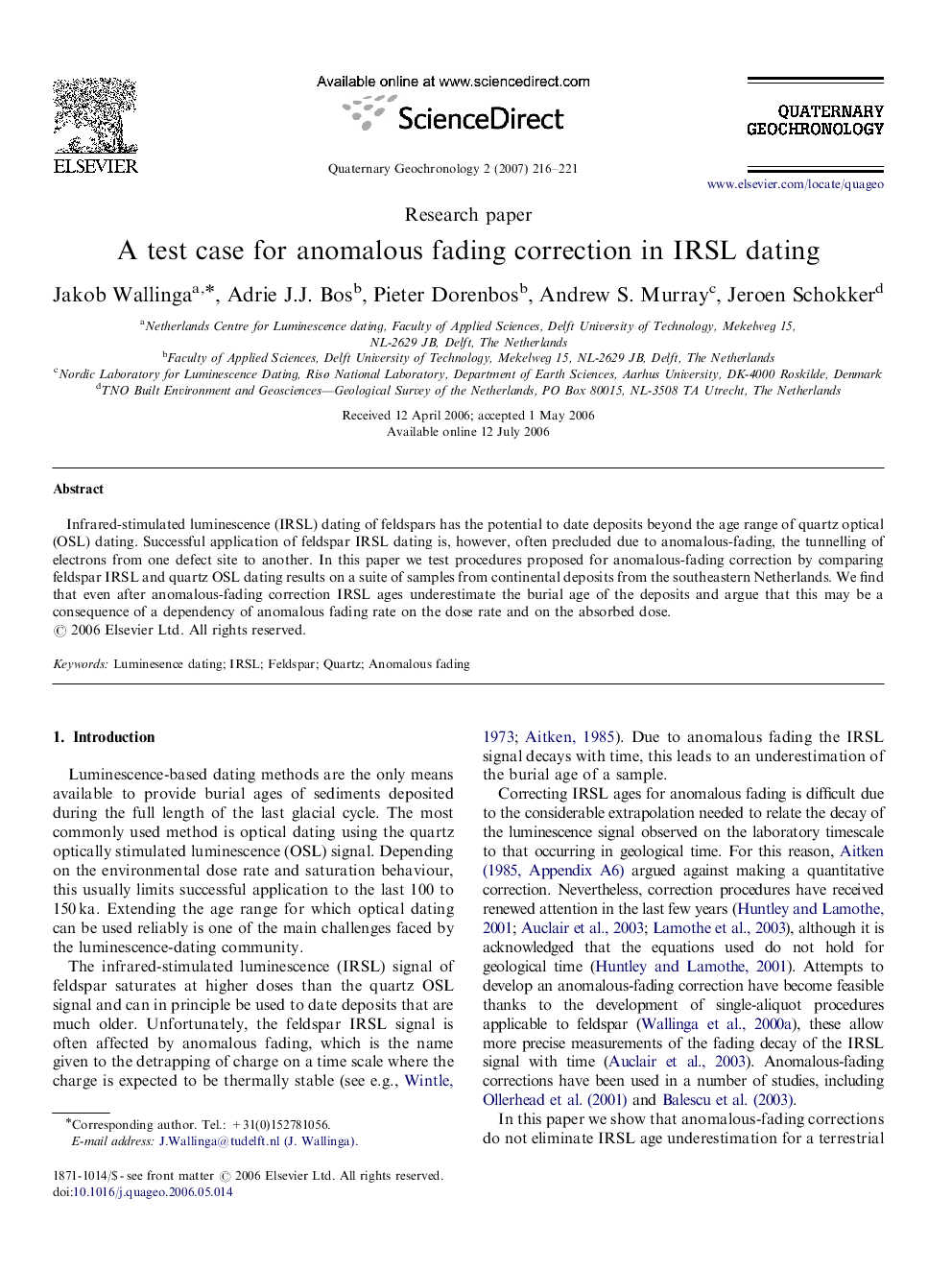| Article ID | Journal | Published Year | Pages | File Type |
|---|---|---|---|---|
| 4725406 | Quaternary Geochronology | 2007 | 6 Pages |
Infrared-stimulated luminescence (IRSL) dating of feldspars has the potential to date deposits beyond the age range of quartz optical (OSL) dating. Successful application of feldspar IRSL dating is, however, often precluded due to anomalous-fading, the tunnelling of electrons from one defect site to another. In this paper we test procedures proposed for anomalous-fading correction by comparing feldspar IRSL and quartz OSL dating results on a suite of samples from continental deposits from the southeastern Netherlands. We find that even after anomalous-fading correction IRSL ages underestimate the burial age of the deposits and argue that this may be a consequence of a dependency of anomalous fading rate on the dose rate and on the absorbed dose.
